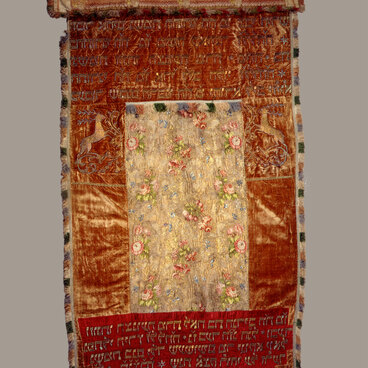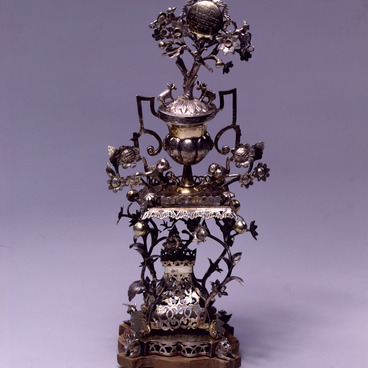In October, Jews celebrate one of their major holidays, Sukkot. It is a festival of harvest, autumnal fertility, joy and fun. Another name for Sukkot is the Feast of Booths, because it is customary to eat and sleep in tents to commemorate the 40 years of wandering in the desert after the Exodus from Egypt. This is what it says in one of the commandments:
Etrog box
Время создания
the late 18th — early 19th centuries
Место создания
Moscow, the Russian Empire
Размер
13x24 cm
Техника
casting, embossing
Коллекция
1
Открыть в приложении#4
#5
Ye shall dwell in booths seven days; all that are Israelites born shall dwell in booths: that your generations may know that I made the children of Israel to dwell in booths, when I brought them out of the land of Egypt.
#6
One of the main commandments of Sukkot is the raising of a lulav, a bundle of four kinds of plants: etrog, date palm, myrtle and willow. “Etrog” is the Hebrew name for the citron, a fruit that resembles a lemon. It is the main one of the four Sukkot plants because, unlike the others, it has both a pleasant taste and aroma. The etrog is also used for many other Jewish rituals. The Torah says,
#7
And you shall take for yourselves on the first day the fruit of a splendid tree, the branches of a palm tree, and the shoots of a bushy tree, and the willows of a river, and you shall rejoice before the Lord your God for seven days.
#8
The process of selecting and buying the perfect etrog was an important ceremony for a devout person. Today, the citron grows in many countries, but in ancient times it was imported from India and Western Asia, so the fruit was very expensive and it was not easy to find an etrog in perfect condition. The fruit had to be preserved throughout the whole of Sukkot, which is seven days.
Special vessels and carriers were used to store the precious fruit. Wealthy Jews had them made from silver, and ordinary people — from wood. The silver carriers could be in the shape of a jewelry box or a fruit, and jewelers decorated them as works of Jewish decorative art.
After the feast, the Jews could continue to keep the etrog in a box to use it also for the ritual of Havdalah — saying goodbye to the Sabbath with prayer and spices. In this way the fruit progressed from one commandment to the next. The Jews pierced the citron with an awl and placed dried cloves in the hole. In a closed container its fragrance would become spicy and rich.
Special vessels and carriers were used to store the precious fruit. Wealthy Jews had them made from silver, and ordinary people — from wood. The silver carriers could be in the shape of a jewelry box or a fruit, and jewelers decorated them as works of Jewish decorative art.
After the feast, the Jews could continue to keep the etrog in a box to use it also for the ritual of Havdalah — saying goodbye to the Sabbath with prayer and spices. In this way the fruit progressed from one commandment to the next. The Jews pierced the citron with an awl and placed dried cloves in the hole. In a closed container its fragrance would become spicy and rich.
#9
Ministry of Culture of the Russian Federation
читать дальшескрыть
00:00
00:00
1x
Etrog box
Время создания
the late 18th — early 19th centuries
Место создания
Moscow, the Russian Empire
Размер
13x24 cm
Техника
casting, embossing
Коллекция
1
Открыть в приложении
Поделиться



